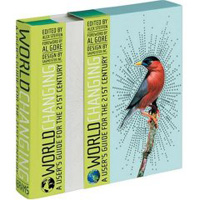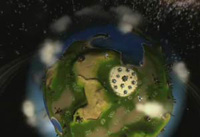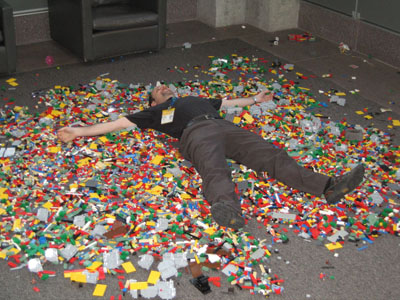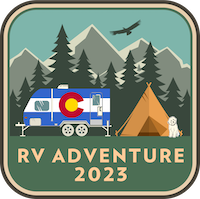Heading for a black hole
This is how things get done in Hollywood, so why not for the new Coudal film 72°?
“It’s always the sign of a good meeting when you decide to go grab a quick drink right after work and you wind up leaving the neighborhood bar at around 8:00.”
A group is its own worst enemy
Lots of people and companies want to know how to put together a great online community. Or scale an existing one way up. Not as many people consider what happens when a community goes bad. This was the topic of a great presentation by Chris Tolles at SXSW called When Communities Attack.
Here are a few points I found interesting.
The tone in discussion forums gets more friendly if posts are geotagged. The rationale, while not proven, is that a degree of anonymity is lost this way and that no one wants to associate a shameful post with their vicinity (or perhaps even suffer being located).
Lots of people have “conversations” with themselves in online communities using alternate screen names to establish credibility.
The word for the non-machine-readable letter grid that is often required for users to input to validate themselves is called a “captcha”. Didn’t know that.
Registration often works against decorum by keeping out good posters who prefer anonymity and by encouraging flamers since registration implies that this community has something good going on inside of it.
I’ve been noodling on this question from a different panel, called Bridging the Online Cultural Divide, since Austin:
Do social networks conjoin communities — i.e., technology facilitates connection where it could not be accomplished before — or does it merely create closed communities by allowing like-minded folks to cohere and separate from the ‘others’? Put another way, is a social network inherently based on segregation or inclusion?
Post title from this great paper by Clay Shirky.
That’s it for recaps of SXSW. Back to the other stuff …
Hack the planet: Spore and Worldchanging
The two most powerful presentations I saw at South by Southwest concerned vastly different topics — gaming and environmentalism — but their essence was the same. How to engineer a planet?
The first was Will Wright’s mile-a-minute discussion of interactive narrative and demo of the upcoming Spore (update: video) .Then, later that day was Alex Steffen’s captivating Worldchanging exploration of living for a sustainable future (udpate: podcast).
Spore of course is really Wright’s “SimUniverse,” starting you off in the protoplasmic goop as a unicellular creature in search of not dying and concluding, if evolution is kind, with you at the helm of a stable, interstellar civilization. Spore is, in short, a massive modeling tool for the complex systems that make up a world. It looks like a hell of a lot of fun.
Steffen’s presentation was about modeling a future world too, though in this case it is the one we’re currently living on. Where An Inconvenient Truth highlighted the problem, Steffen’s site, book, and organization work to demonstrate solutions. He is a powerful speaker. The audience was as spellbound as it was during the Spore demo and probably for the same reason: waiting raptly to find out how this particular world was going to turn out.
Both the game and the strategy for a sustainable Earth have to do with little things that have big consequences. In Spore this might be giving your creature asymmetrical appendages, something which may serve you well when foraging in nooks and crannies but which might turn out to be a liability in hand-to-hand combat or when piloting a spaceship. In Worldchanging, it might be car-sharing, for people who share a vehicle tend to be more efficient drivers since they have to plan their excursions. Both talks were essentially about sliding the scale on civilization and seeing what happens, what Steven Johnson calls The Long Zoom. (His recent book, The Ghost Map, focuses on the interplay of scale between the cholera microorganism and the urban patterns of 19th century London.)
Wright calls interactive narrative of this sort “filling in possibility space”. There’s always structure and constraint, but an element of free will allows for gameplay. You might argue the same goes for environmentalism. Natural resources, physics, and the human imagination are our constraints. We must merely fill in the possibility space, change the narrative for a happier ending.
Wright says that “the process of playing the game is the process of making assets for the game.” You could say the same thing about SimCity too, of course, but you could also say that about life. If life is a game — and in non-trivial ways, it is: a set of goal-directed actions to maximize returns — then we’ve got a rather tidy analogy on our hands. You don’t live in a static world; you make the world as you live.
Consider these quotes:
“One must dematerialize the extraneous stuff that gets in the way of the experiences we want.”
“Compact living in well-designed cities dematerializes transportation and infrastructure allowing access by proximity.”
“Many things are only garbage when they are in the wrong place.”
All from Steffen, all about eco-friendly living. But they’re absolutely relevant to Spore. Which isn’t to say that Spore is an in-your-face green manifesto. It isn’t. You might create a perfectly sustainable planet with oceans of methane. But in doing so you’ve foreclosed many possibility spaces suitable to human beings. Fun in a game, not so fun for carbon-based lifeforms.
Some other bits I found interesting in the Worldchanging session:
Car-sharing is an old idea (it just sounds 1970’s) made useful only through recent mapping and GPS technologies. ZipCar and iGo are successful because technology has finally made it easy for people to find a car when they need one.
Steffen asked how many in the audience owned power drills. Most hands went up. (This was a geekfest after all.) He then told us that the average power drill gets used for six to twenty minutes in its entire life — an epitome of unsustainable waste. What we want is the hole not the drill.
Measuring things changes the way you use them. The example he gave came from the UK where a test group had their energy meters moved inside the house. This act by itself reduced power consumption. When you see the meter you think about the meter and when you think about it you turn the lights off.
Why can’t we separate practical objects from objects that mean something to us? Your childhood teddy bear means something to you emotionally, where your washing machine most likely doesn’t. What if most practical objects were leased rather than owned? The effect would be greener production. If a cell phone manufacturer had to take the phone back at the end of its useful life the company would be far more likely to make it easy to recycle. (Steffen called computers — which nearly everyone in the audience had on their lap — an “environmental nightmare” because of their unrecyclability.)
It was interesting to me that some of the technologies found in the third world are the greenest: evaporative refrigeration, fog-catchers, rainwater recyclers, wired infrastructure leapfrogging.
The final bit of advice was to “green your geek.” Don’t stay up at night worrying about paper versus plastic. Rather focus on whatever you are really into (i.e., “your geek”) and try to change just that. Simple, potentially powerful.
In the end these two sessions about Spore and Worldchanging kinda merged in my head. To create a sustainable world you have to imagine what you want, then build it. Spore gives us a simulator; Worldchanging gives us an imperative.
Reminds me of the History Channel City of the Future design challenge. Much more on this soon!
As a sidenote, it’s been remarked that the panel-heavy structure of South by Southwest doesn’t allow for sustained exploration of an idea. I’m still a fan of the conversational tone of the panels, but in looking back on the week that was I admit that the three most powerful sessions I attended had a single speaker.
Spring dust-off
Except it isn’t spring in these parts for about two more months.
For those of you who follow Ascent Stage in a feed reader, I have changed the blended feed for the main posts and marginalia to http://feeds.feedburner.com/AscentStage. This feed appends [del.icio.us] to all Marginalia links to ease the distress of clicking on a link only to learn it is merely a link and not a meaty post. You know who you are. The old feed should still work properly. And if you’re not subscribing to the blended feed, why not? By the way, the margin links are not ads. They’re other places in the tubosphere that I find interesting.
MediaLoom, that dinosaur project that I’m still rather fond of, has been moved into the Ascent Stage empire. Nostalgic for Macromedia Director and platform incompatibility? Click here!
Many busted links fixed. Not all, certainly. But many.
That is all.
Worldbits
Some thought-bombs from SXSW. Sorry not to properly attribute quotes. Was typing too fast to look up. If not in quotes, it is just my observation and, thus, suspect.
- “Closed formats suck!” [applause] — Raph Koster, referring to Second Life and prims.
- People are pretty much salivating for a Google Earth-powered virtual world.
- “I want to see high-detail interiors.” — referring to the next step in Google Earth’s evolution.
- DIY data visualization sites like Many Eyes and Swivel could create lots of valuable overlays for Google Earth.
- John Tolva: “page-based vs. spatial internet” vs. Ben Cerveny: “document-based computing vs. relationship-based computing”.
- Justin Hall’s Passively Multiplayer Online Gaming.
- “Why do all the robots ‘live’ in Japan? Because the Japanese have an animist tradition and they have no problem that a non-living thing could be talking to them.”
- “Why is it that as soon as we get the ability to do anything we want in a virtual world that we immediately try to recreate ‘Menlo Park’? Painting sought a new direction when photography made realism easy.’ Why can’t we do that with virtual worlds?” This is one way of stating the oft-heard praise of the playful Wii versus the realist firepower of the PS3. Why must virtual worlds be photorealistic?
- “Online consumers are essentially non-player characters because their actions are so constrained.” LOVE that.
- Avatar psychology (from an audience response):
Do I contradict myself?
Very well then I contradict myself,
(I am large, I contain multitudes.)
— Walt Whitman, Song of Myself - “What is the role of the non-player character in a non-gaming world?” Um, how about a tour guide?
- You do know that Flickr, archetypal Web 2.0 site that it is, started as a game, right? The .gne extension you sometimes saw at Flickr stands for Game Neverending.
- Jamais Cascio asked: “Where is the 3D Wikipedia?”
Answer: “I think that might presuppose a taxonomy of everything in the world and that might be, you know, a challenge.” - “VRML wasn’t so useful for VR. It was too heavy. Online 3D spaces pull much more heavily from games. In the end, the commercial formats ended up being the good ones.” — Raph Koster
- “The number one form of user-created content is the screenshot.” — Raph Koster
- Word: “toyetic” — the toy-like enjoyability of something (Sketchup was the example).
- Word: “extimate” — opposite of intimate, but not the same as distant, referring to avatars — Jamais Cascio
- “It is far easier to make a Mii avatar than an SL avatar, ergo, there will be more Mii avatars. It is just that simple.” — Raph Koster
- “Humans actually relate to iconified individuals better than photorealistic individuals. 3D does not have to be photoreal.” — Raph Koster
- “We need some aesthetic honesty here. Mashups suck.” — Bruce Sterling
- Bruce Sterling describes the new global order, channeling Yochai Benkler:
- First World – the global market
- Second World – all forms of governance (local, regional, national)
- Third World – socially-motivated, commons-based peer production (e.g. Craigslist, Wikipedia)
- Fourth World – disorder (the largest and fastest-growing)
Universal format
So, I spent much of my time focusing on spatial tech, 3D worlds, metaversy stuff this SXSW season. There were so many good observations. I’ll sprinkle some in series a posts.
In the green room before our panel I was noting to Ben Batstone-Cunningham how odd it was that teens could not take their friend lists with them when they turn 18 and “graduate” from the teen grid to the main grid on Second Life. As a former Lindener, he said that this was entirely by design for security reasons (the two grids having no messaging interconnects) but that you could in fact bring your inventory with you to the new grid. But he also asked rather pointedly, which would you rather take, your list of friends or your actual things?
That’s not being crass. It is a statement about the non-techncial nature of people networks, the foundation of the success of any social world. You can’t export a personal relationship. Or, rather, you don’t need to. It is a universal format. It persists across platforms. Your app may facilitate the creation and maintenance of such relationships, but the relationships themselves move smoothly between any world. Watch as the Twittersphere shrinks post-SXSW. But the relationships — at least some of them — will persist.
There was much talk at SXSW about OpenID. When will x application support OpenID? So people are of course thinking about identity across worlds and this will help relationship networks bridge changing technologies.
But it does come back to people. Just like blogs, podcasts, and just about anything we seem to care about. This should be the focus first. Then technology.
Tags: socialnetworking
Optimism
Kudos to Boingo for treating my request to not be signed up for a monthly charge not as a problem, but an opportunity. No, no. I am an Unlimited Upsell! Consider the possibilities for this hapless day user!

The browser window itself was called Click Capture. At Boingo, they are all about giving it to you straight. Straight somewhere.
Texas nerdquake
A great last few days here in Austin. SXSWi has just wrapped up and I’ve got a bucket of notes, unvisited links, and ideas to sort through. Which is exactly the way I like it. Ingest complete, begin digest. Look forward to a few excreted posts in the coming days.
A few morsels.
Twitter, oh my goodness Twitter, was the darling of the festival. Literally everyone was using it to catch up with one another or just buzz softly in the great hive mind. There were screens set up in public areas that provided a steady flow of tweets. It definitely took the place of the room-by-room IRC channels from previous years. In a way, Twitter is just really slow IRC. But you can already see where this is going. Eric Rice is right when he says that a fest like SXSW is perfect for Twitter (especially given the overloaded WiFi) but that the long-term usefulness of such a dump of minutiae may be questionable.
There was a lot about virtual worlds this year — more about that soon — but it wasn’t completely dominated by Second Life, which is good. There was a lot of buzz about an impending Google metaverse (what with the Earth renderer, Sketchup, and their purchase of Adscape Media). Of course last week’s announcement of Sony’s PS3 Home got a lot of people talking, mostly skeptically. And the Wii is simply adored.
Hardware DIY was big, especially given the deification of Phil Torrone for his Frogger hijinks on 6th Street last year. He and Limor Fried provided one of the keynotes. The Open Source Hardware movement is very interesting indeed. Fried demonstrated an illegal cell phone jammer to a room full of astonished geeks. I gotta get me one of them.
Last year’s darling — tagging — was scarcely heard from this year. Tag: tired.
As always the best part of SXSW is what happens away from the convention center. This year’s dorkbot meetup was especially well-done. You simply can’t beat drinking free beer to the sound of humming tesla coils. Though the conference grew in size by almost 80% the parties didn’t seem any more crowded than usual.
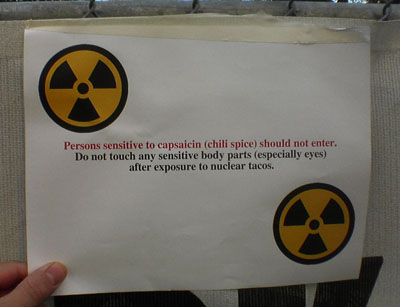
Should have heeded the warning
Best way to make a friend at SXSWi: pull a power strip out of your bag.
Overall, wonderful. I knew more people this year, but met fewer. I’d prefer to meet more, but that’s the dark side of an expanding social network I suppose. My only complaint is that the size of the fest is such now that they’ve had to expand into other, very hard-to-reach areas of the convention center. It made for long slogs from panel-to-panel and also cut down on the mingling.
Special thanks to my panelists, by the way. A great discussion.
“Okay, I’m a little bummed. I didn’t learn anything.”
Best blog comment on my panel at SXSW this morning, above.
A good time and great discussion. Diverse panel, mosty sober audience (and panelists). Crappy interweb in the room though. Not sure it streamed into SL. Anyone know?
A few more thoughts here:
Note: lots of smart people at SXSW. Lots of good insights. Proficiency using microphones: not so much.
The truth hurts, don’t it?
Transcript (ish) on 3pointD here. More soon …

